Pirani Gauge Is Used to Measure Which Pressure
Marcello Stefano Pirani was a German physicist working for Siemens Halske which was involved in the vacuum lamp industry. Answer 1 of 3.
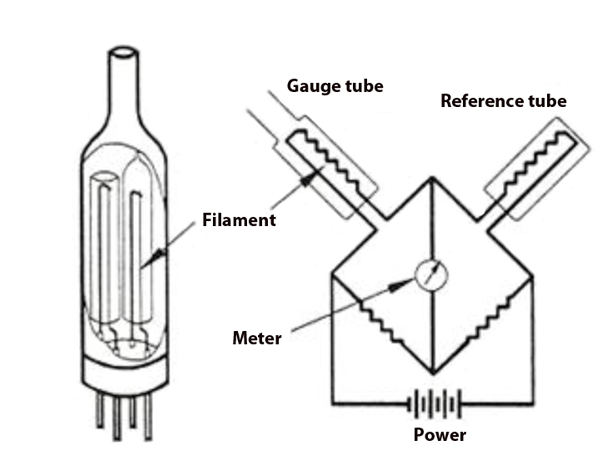
Proper Selection And Use Of Vacuum Gauges
The thermal conductivity and heat capacity of the gas may affect the readout from the meter and therefore the apparatus may need calibrating before accurate readings are obtainable.

. Applications of Pirani gauge Used to measure low vacuum and ultra high vacuum pressures. Limitations of Pirani gauge. Pressure Measurement Pirani Gauges KJLCPirani Gauge 375e-4 to 760 Torr Compact design Replacement sensors available Tungsten or Nickel Filaments Optional Setpoints 250ºC bakeable version MKSGranville-Phillips925 MicroPirani Vacuum Transducer 1e-5 to 1000 Torr Optional Display MEMs Technology Compact Design Repair Kits available.
Pirani gauge is one of the most common thermal conductivity gauges which is used at it of platinum nickel or tungsten filament. View all posts by Electrical Workbook 12 Dec 2021. Relation between pressure and resistance is linear for the range of use.
In 1905 their product was tantalum lamps which required a high vacuum environment. Used to measure pressure at low pressures and high vacuum pressure. Pirani gauge consist of two tungsten filamentsa power source and a volt meter or ammeterone of the filaments is placed to gauge tube and is exposed to the environment where the pressure is measuredthe other filament is placed in sealed reference tube filled with gas constant pressurethe filaments are heated up by passing current through.
This change in resistance of the Pirani gauge filament becomes a measure of the applied pressure when calibrated. The ability of a material to carry heat by conduction is called thermal conductivity. Ionization measuring devices include hot-cathode devices like the Faraday cup and cold-cathode devices such.
Measuring range for different gauges. 133 10 -6 bar to 133 10 -3 bar. Liquid level at atmospheric pressure Answer.
Advantages of Pirani gauge They are rugged and inexpensive Give accurate results Good response to pressure changes. Applications of Pirani gauge Used to measure low vacuum and ultra high vacuum pressures. The Pirani gauge is a robust thermal conductivity gauge used for the measurement of the pressures in vacuum systems.
Thermal devices include the Pirani gauge which can include one or two wires. Option B Related Questions on. Application of Pirani Gauge Used to measure low pressure of range 0133 Pa to 133 Pa ie.
It is based on a hot metal wire suspended in a tube and exposed to gas pressure media. Instruments used to measure and display pressure in an integral unit are called pressure meters or pressure gauges or vacuum gauges. Advantages of Pirani gauge They are rugged and inexpensive Give accurate results Good response to pressure changes.
Pirani gauges are a group of indirect measuring pressure gauges which measure the thermal conductivity of the gas sample. Pirani gauge is used for the measurement of Examveda Pirani gauge is used for the measurement of A. It must not be used for measuring flammable or combustible gases in mixtures containing oxidants eg.
The Standard Pirani Gauge KJLC PIR has been designed for vacuum measurement of gases in the pressure range of 510-4 1000 mbar. Limitations of Pirani gauge. Pirani gauge is a device which is used for the measurement of pressure in vacuum systems or in very low-pressure ranges from 10-1 to 10-3 mm of Hg.
2 Underrange 110 Safety. A Pirani gauge is a reliable thermal conductivity gauge used in vacuum systems to measure low pressures. Published by Electrical Workbook We provide tutoring in Electrical Engineering.
A manometer is a good. The Pirani vacuum gauge was designed to measure low pressures by utilising the variation of heat loss from a wire with the pressure of the surrounding. Relation between pressure and resistance is linear for the range of use.
It works by suspending a hot metal wire in a tube and exposing it to a gas pressure medium. As gas molecules collide with the filament wire heat is transported from the hot wire. 15 1 05 025 Laser droppler anemometer is used to measure.
The working of this gauge depends upon the variation of thermal conductivity of a gas with pressure. Ring balance gauge is used for measurement of. It was invented in 1906 by Marcello Pirani.
Pirani Gauge is a device that is used to measure pressure especially in vacuum systems. Pirani gauge is designed and built based on the dependence of the heated wire resistance to its temperature. Readings can be taken from a distance.
A heated metal filament typically platinum in modern gauges loses heat to the gas from collisions of gas molecules with the wire. A pirani gauge works on the principle of change of Which of the following strain gauge material has the highest value of gauge factor. The Pirani Gauge for the Measurement of Small Changes of Pressure.
Applications of Pirani Gauge. The heated Pirani sensor filament is typically made of a thin. The Pirani gauge measures the vacuum pressure dependent thermal conductivity from the heated wire to the surrounding gas.
Liquid level under pressure D. Instruments used to measure and display pressure in an integral unit are called pressure meters or pressure gauges. It is also used a plot graph based on the data obtained.
The gauge may be used for pressures between 05 Torr to 10 3 Torr. Atmospheric oxy- gen within the explosion range. The heat loss is a function of.
Pirani gauges are typically used in the fine vacuum range 1 torr 10 -3 torr as this is the range where they achieve the best accuracy. The Pirani gauge is a robust thermal conductivity gauge used for the measurement of the pressures in vacuum systems. A connection is usually made either by a ground glass joint or a flanged metal connector sealed with.
Absolute pressure vacuum differential pressure temperature Accuracy of standard pressure gauges used for testing and calibration purposes is of the order of. The Pirani gauge consists of a metal filament usually platinum suspended in a tube which is connected to the system whose vacuum is to be measured. This hot metal wire is made up of thin Tungsten Nickel or Platinum wire.
In short it takes several minutes for obtaining thermal equilibrium at low pressure. It was invented by a German physicist Marcello Stefano Pirani in the year 1906. Pressure velocity level density.
A strain gauge with high sensitivity and high gauge factor is Mcleod gauge is used to measure Ionisation gauge is used to measure pressures Nitrocellulose cement is used with strain gauge as. Very high pressure B. Thin tungsten nickel or platinum wires are.
Trademark VCRSwagelok Marketing Co. Readings can be taken from a distance. These gauges are applied to measuring pressure about 10-2 MPa.

What Is Pirani Gauge Working Of Pirani Gauge Construction Of Pirani Gauge Principle Of Pirani Gauge
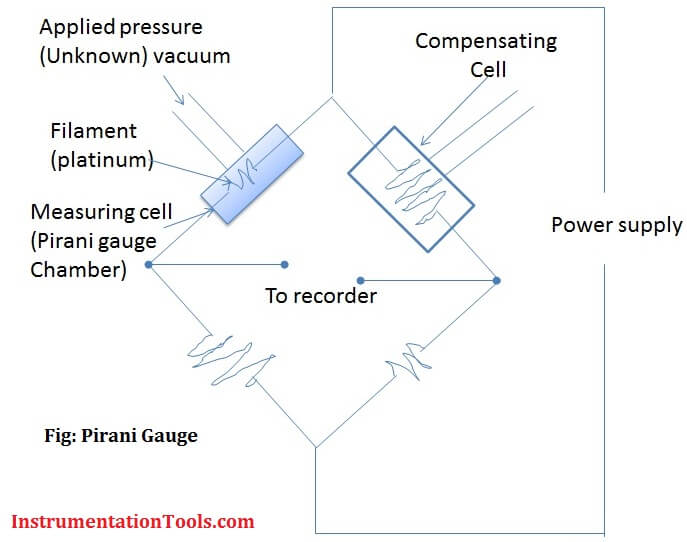
Pirani Gauge Working Principle Instrumentationtools

What Is Pirani Gauge Working Of Pirani Gauge Construction Of Pirani Gauge Principle Of Pirani Gauge
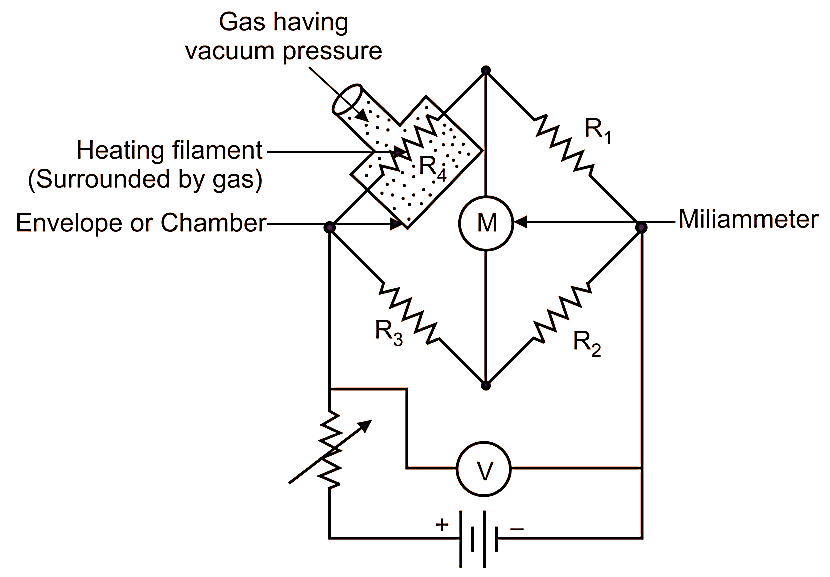
What Is Pirani Gauge Working Diagram Applications Electricalworkbook

Thermocouple Gauge Pirani Gauge

Pirani Gauge An Overview Sciencedirect Topics
Pirani Gauge Construction Working Advantages Disadvantages Applications And Its Special Form

Pirani Gauge Working Principle Low Pressure Measurement By Wheatstone Bridge Animation Video Youtube

What Is The Working Principle Of The Pirani Gauge

Thermal Conductivity Gauges Normandale Community College
Pirani Gauge Vacuum Gauge Working Constructional Features

Pirani Gauge An Overview Sciencedirect Topics

The Story Behind The Pirani Vacuum Gauge

Pirani Gauge Working Principle Application Advantages Pnpntransistor

Lec 30 Ii Vacuum Pressure Measurement And Pirani Gauge Youtube
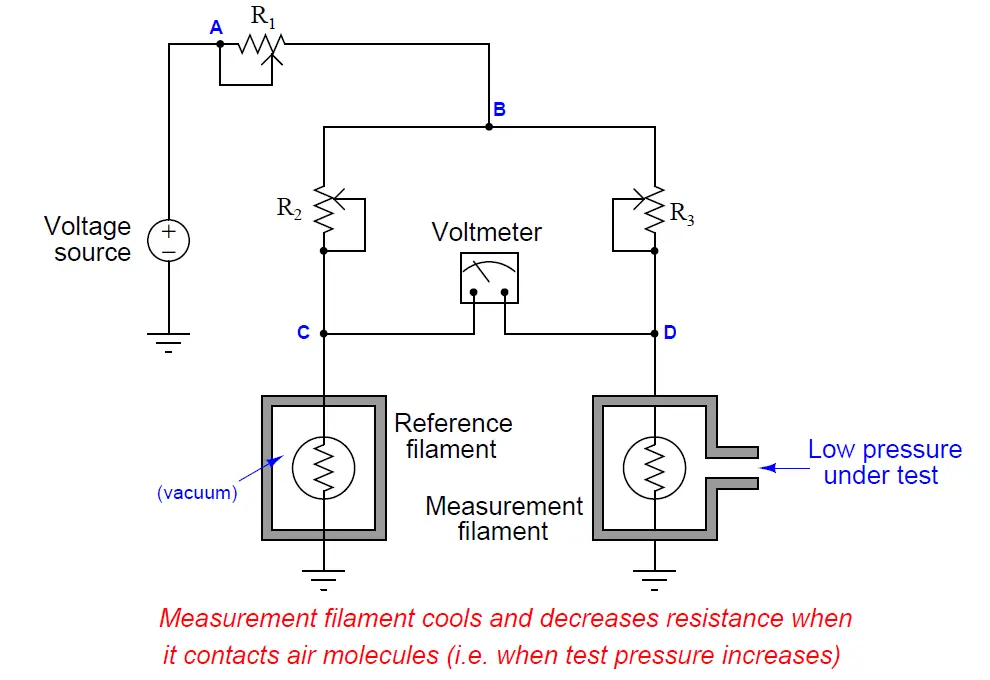
Problem With Pirani Gauge Instrumentation Tools
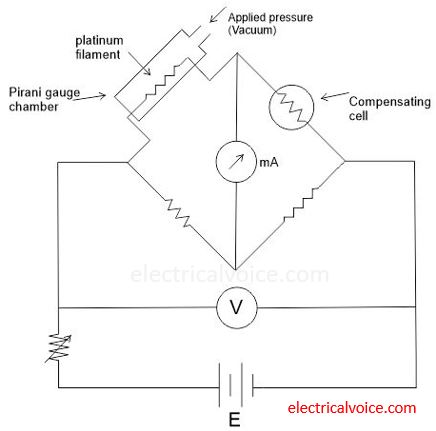
What Is Pirani Gauge Working Advantages Disadvantages Electricalvoice
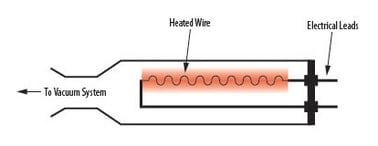

Comments
Post a Comment